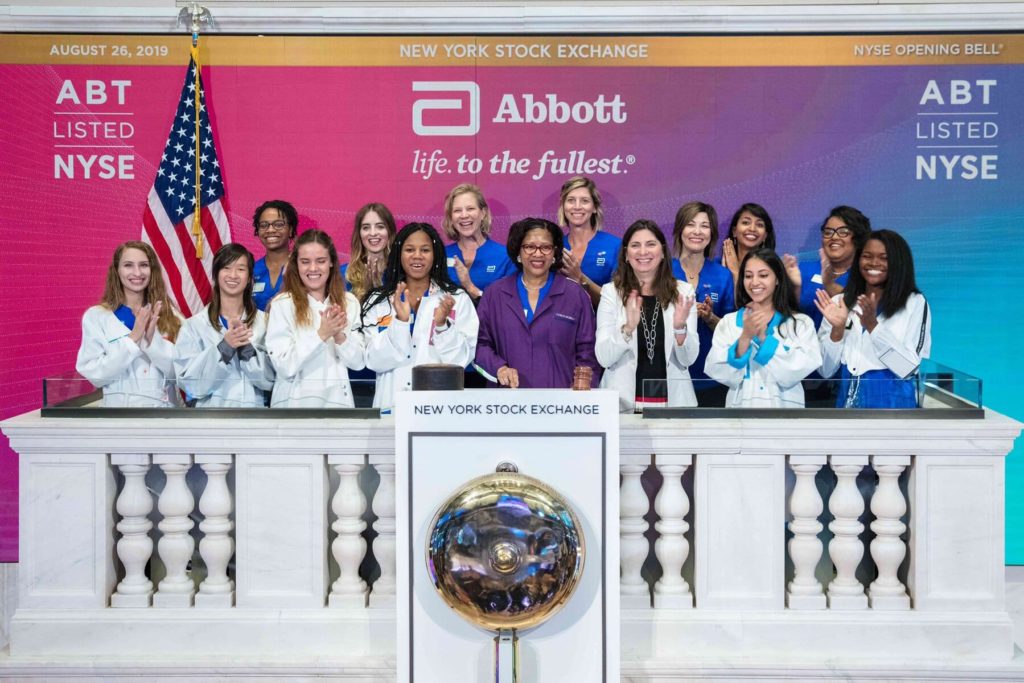-
On Women’s Equality Day, Abbott is publishing a blueprint for creating a high school STEM internship aimed at exposing young people, particularly girls, to STEM early and empowering other companies to download and use it
-
More than half of girls in a YouGov-Abbott survey say they aren’t encouraged to study STEM, but 89% of girls who are urged to study STEM say they plan to pursue it in their educations
ABBOTT PARK, Ill., Aug. 26, 2019 (PRNewswire) | We know the facts: Girls are less likely to be encouraged to study science, technology, engineering and math. Women who do pursue STEM degrees often don’t take related jobs. And when women find work in a STEM industry, many leave within a decade.
Abbott (NYSE: ABT) has found a promising way to help address these trends with our high school STEM internship program. About 130 young people have completed our program since 2012, and of them, 97% have gone on to study STEM in college. This has inspired Abbott to today, Women’s Equality Day, issue a call to action for other companies to join us – because it will take all of us to change the fact that less than a quarter of the STEM workforce is women.
To help, we are doing something companies rarely do: making our internal plan public. “Shaping the Future of STEM” is our detailed blueprint for a successful high school internship aimed at offering young people, particularly girls, experience in the STEM fields. Abbott is publicly releasing this guide today with the hope that other companies will use it to create similar programs. We’re also sending it to CEOs and human resources leaders at Fortune 500 companies.
“Not exposing women who have a talent for math and science to STEM fields is tragic, but solvable,” said Corlis Murray, senior vice president of Quality, Regulatory and Engineering Services, Abbott. Murray has had a more than four-decade engineering career, is one of Abbott’s high school internship founders and has been an advocate for women’s STEM education. “But the remedy must be bigger than a social media post or field trip day. Companies need to offer girls internships when they’re still in high school to inspire them and position them for careers when they graduate.”
Women make up nearly 40% of Abbott’s U.S. science, technology and engineering workforce. While we’re not perfect, we’re pursuing change, and if we all work together, we can dramatically increase the number of women in the overall U.S. STEM workforce. We know encouraging more women to pursue STEM careers means more diversity of thought in our labs and workspaces, which means we can create even better life-changing breakthroughs.
Abbott STEM Perceptions Study
The Abbott study, conducted in partnership with YouGov, demonstrates the need to expand STEM opportunities for girls. Nearly 5 in 10 of the girls (ages 11-15) indicated they aren’t encouraged to study STEM. Even when women do get STEM degrees, only about 6 in 10 of them said they got STEM jobs or internships out of college – and more than half of women who work in STEM upon graduation leave STEM within 10 years. Meanwhile, data from the U.S. Bureau of Labor Statistics project there will be more than 1 million more STEM jobs by 2026, a nearly 11% increase from 2016.
“One of the reasons I think that women are not as likely to pursue STEM fields is they’re not exposed to it,” said Rosie Carrion, an Abbott engineer who participated in our high school internship program. “I don’t think I would be where I am today without having exposure in high school.”
Abbott started the high school STEM internship program seven years ago in part to increase the numbers of women in our pipeline of recruits for science and engineering. It has paid off. Two-thirds of our interns are typically young women and we recently hired our first former interns as full-time engineers. Five of the seven are women.
“Our blueprint is working,” Murray said. “We want it to work for other companies, too. The future of the next great inventors, scientists and engineers depends on it.”
To learn how to join Abbott in this effort, visit www.stem.abbott.
YouGov Methodology:
Two surveys were conducted online with YouGov. The first was among 655 U.S. women aged 18 and older who graduated with STEM degrees. The second was among 513 girls and boys ages 11-15. The responding sample was weighted to the profile of the sample definition to provide a representative reporting sample. Interviews were completed in May 2019.
About Abbott:
Abbott is a global healthcare leader that helps people live more fully at all stages of life. Our portfolio of life-changing technologies spans the spectrum of healthcare, with leading businesses and products in diagnostics, medical devices, nutritionals and branded generic medicines. Our 103,000 colleagues serve people in more than 160 countries.
Connect with us at www.abbott.com, on LinkedIn at www.linkedin.com/company/abbott-/, on Facebook at www.facebook.com/Abbott and on Twitter @AbbottNews and @AbbottGlobal.
